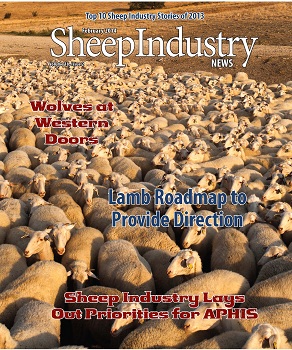
- February 2014
- President’s Notes
- Market Report
- American Lamb Industry Announces Final Roadmap
- Looking Back: Top 10 Sheep Stories of 2013
- Sheep to Shawl
- Sheep Growing Senator Weighs in on Idaho Wolf Debate
- Are Your Ewes Pregnant?
- Economist Sees Bumpy Years for U.S. Ag
- New Farm Bill May Bring Insurance Issues
- New Wool Yarn Mill Filling Niche
- College Wool Judging Teams Pick Up Skills Together at Belle Fourche Clinic
- ASI Offers Sheep Priorities to APHIS
- Utah Farm Bureau: States Can Manage Wolves
- Farmland Prices Rise, But How Long is Ride?
- Sheep Heritage Contributors
- Obituaries
Economist Sees Bumpy Years for U.S. Ag
COLUMBUS, OH – An agricultural economist at Ohio State University has some words of caution for U.S. farmers.
“The last six years have been extraordinary years if you are a row crop producer,’’ Matthew Roberts told a workshop Monday at the American Farm Bureau Federation’s convention in San Antonio. But prices have fallen and “the next six years will not be like that,” he said.
Roberts, an associate professor at OSU’s Department of Agricultural, Environmental and Development Economics, is predicting a four-to-five year period of “lower costs and profitability.’’ And he advised farmers to “put one year’s worth of land charges (above normal working capital needs) in the bank as soon as possible.”
Roberts also had some more personal advice for young farmers, who he said may never have experienced hard times. Farmers should make sure they communicate with their spouses about their financial situations, he said, adding, Pushed by record prices for corn and soybeans, U.S. net farm income last year was estimated at about $131 billion, the highest in 40 years, once adjusted for inflation. Farmers responded to the surge in prices by planting a corn crop that USDA says will approach 14 billion bushels, the biggest ever, overwhelming increased corn crop demand for ethanol and livestock feed.
“High prices give incentives to change behavior,’’ Roberts said. “As a result, global corn, soybeans and wheat production have all increased substantially.”
Re-printed from Agri-Pulse

